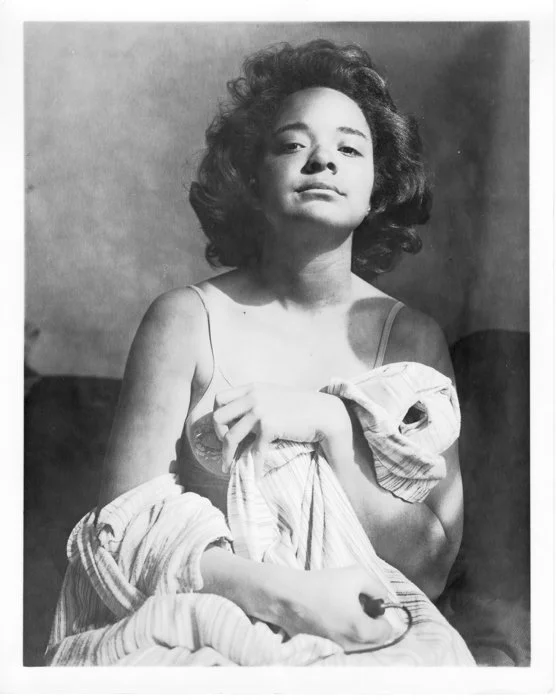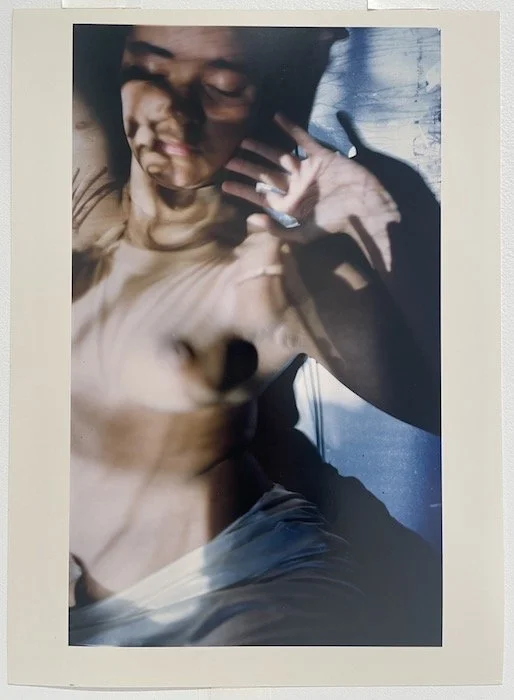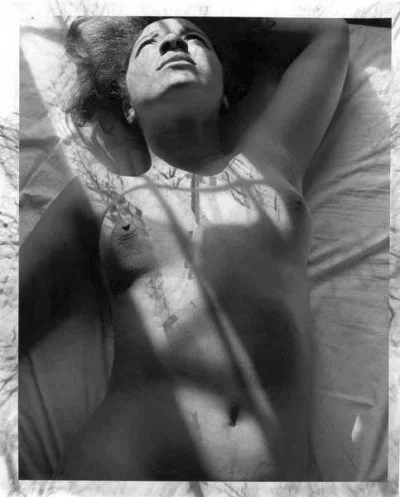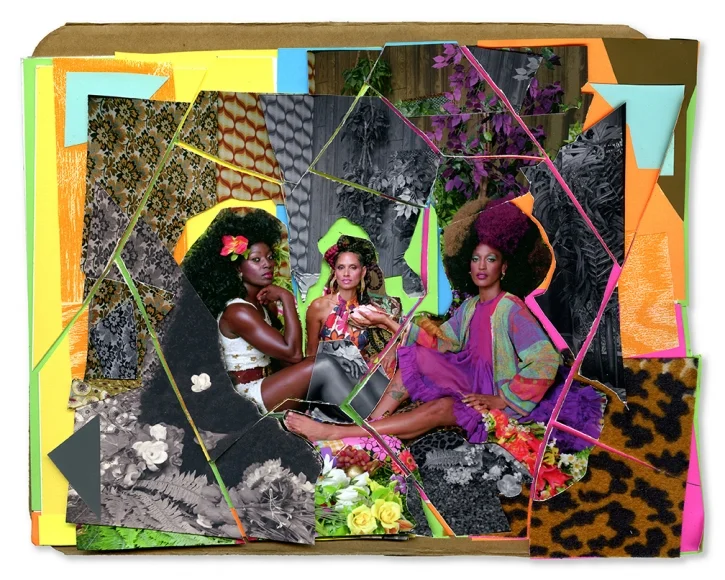Exhibition Review | Carla Williams: Circa 1985
Carla Williams. Untitled (red flannel I), 1984-1985, printed 1984-1985, gelatin silver print, bleached, image dimensions: 9 1/8 x 7 1/4 inches, paper dimensions: 10 x 8 inches
Written by Grecia Espinoza
Copy edited by Julien Tsai
In the odyssey of the common artist, a substantial stretch is spent in anticipation of that ever-elusive muse. But waiting for inspiration is a luxury, and what if the artist cannot afford such leisure? Carla Williams- a queer, young black woman working in a male-dominated medium in the 1980s- would not wait idly for a muse. At the tender age of 18, Williams propped up her 35mm instant Polaroid and stood vulnerably before the lens, fashioning the self into both artist and muse. The ensuing images seized a young woman in the throes of self-discovery, confronting questions of sexuality and identity. Now, Higher Pictures showcases these evocative self-portraits in an exhibition aptly titled “Circa 1985.”
Carla Williams. Untitled (projection) #P1, 1984-1985, printed 1984-1985, c-print, image dimensions: 12 1/4 x 7 1/4 inches, paper dimensions: 13 1/2 x 9 3/4 inches
Between the years of 1984 and 1986, Williams captured a series of personal and intimate self-portraits, later used in her thesis exhibition for her Bachelor of Arts degree from Princeton University. In the ensuing years, Williams pursued an M.A. and an MFA, though ultimately opted for a different path, forgoing a promising career in the art world. The self-portraits that had earned acclaim from peers and professors in her early years laid dormant for decades. Today- with more than 30 years separating the young girl in the images from the woman of the present- Williams liberates the images. “Circa 1985” is a restaging of Williams' undergraduate thesis exhibition.
Carla Williams. Untitled (projection) #P6, 1985, printed 1984-1985, c-print, image and paper dimensions: 13 x 10 inches
At the gallery, William’s Polaroids hang frameless, bearing the lightness of feathers. The photographs are strikingly juxtaposed against flesh-toned construction paper, and there is a welcoming serenity in the room. The intimate nature of the photographs invite the observer into the inner-life of both artist and muse. The images reveal the young woman’s thoughts. They spill her secrets. In a diary entry from that time, Williams beautifully described her relationship with the camera:
it is as though I can tell it everything
all of my secrets
and it listens, intently, carefully
and repeats it aloud
and I hear it repeated and although it sounds nothing like my original words
I recognize these words… and the camera is right…
There is the image you present to the camera but it is never the one the camera records
The relationship is rather like telling one's deepest secrets to a friend.
Perhaps Williams’ unwavering trust in the camera is what lends her photography an intoxicating freedom of spirit, both in subject matter and technicality. Many of her 4x5 and 35mm instant Polaroids bear speckles from a processing error, imparting the images with a creative urgency and originality emblematic of an artist at the dawn of her prowess.
Carla Williams. Untitled (window double) #18A 1985, printed 1985, gelatin silver print, image and paper dimensions: 10 x 8 inches
In the 1980s, canonical images in art history seldom depicted nude Black women. The closest semblance of representation could be occasionally glimpsed in National Geographic magazines, playfully dubbed “the Black man's Playboy” in an old Richard Pryor joke. In this scarcity of representation in art, Williams was primarily influenced by pop culture and her father's hidden copies of Playboy and Penthouse. Although she never harbored aspirations to become like the women in the magazines, she admired their bold confidence and sensuality. These early influences would integrate into her consciousness, eventually finding expression in her photography. While unbeknownst to Williams at the time, the images she captured grappled with and addressed the omission of the black female nude from art history.
Carla Williams. Untitled (red body) #1, 1985, printed 1985, c-print, image and print dimensions: 10 x 8 inches
Her photography undeniably carries this historical weight. The young girl living in the images is alive, vibrant, and audacious; she moves, weeps, scowls, arches, and bends. But ultimately, she relishes in her freedom and power. She celebrates her complete autonomy in her life and in her art. It is a privilege to imagine that young girl, proudly black and queer, seated before her lens, savoring her freedom, momentarily unburdened by the political landscape of the 80s. Somewhere in New Jersey, in a dimly lit room, a young woman was safe to put her guard down in the security of her solitude, and now she is ready to let us inside.
Carla Williams Untitled (Totem) #2a 1985, printed 1985, Gelatin silver print 14 x 11 inches













